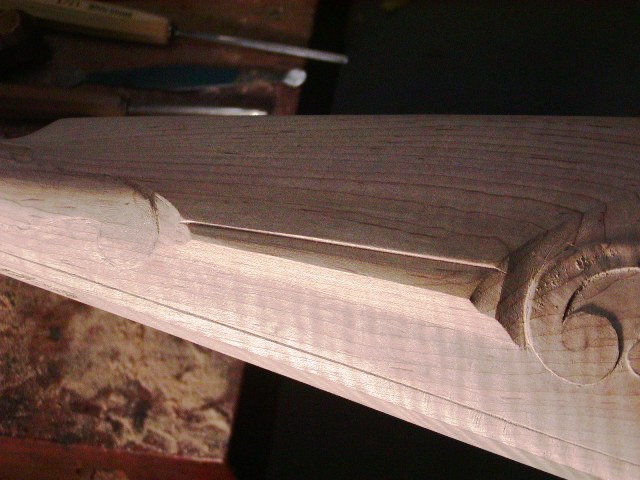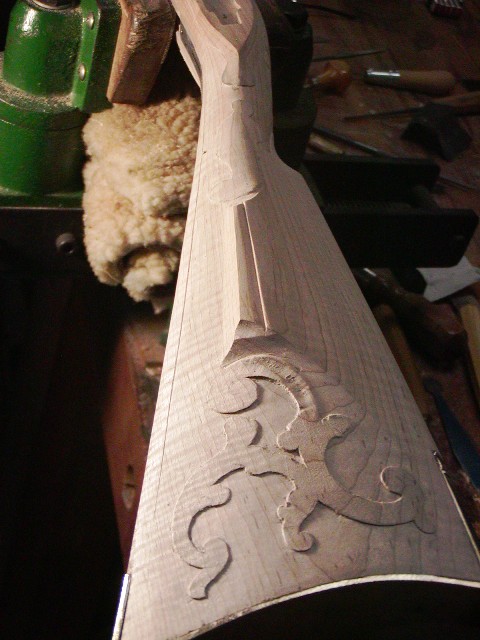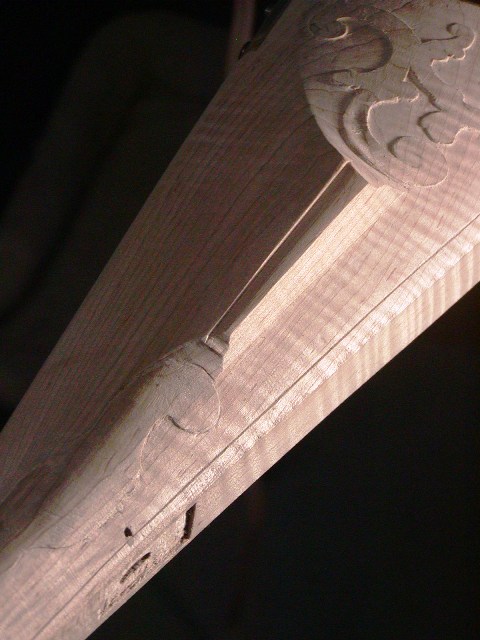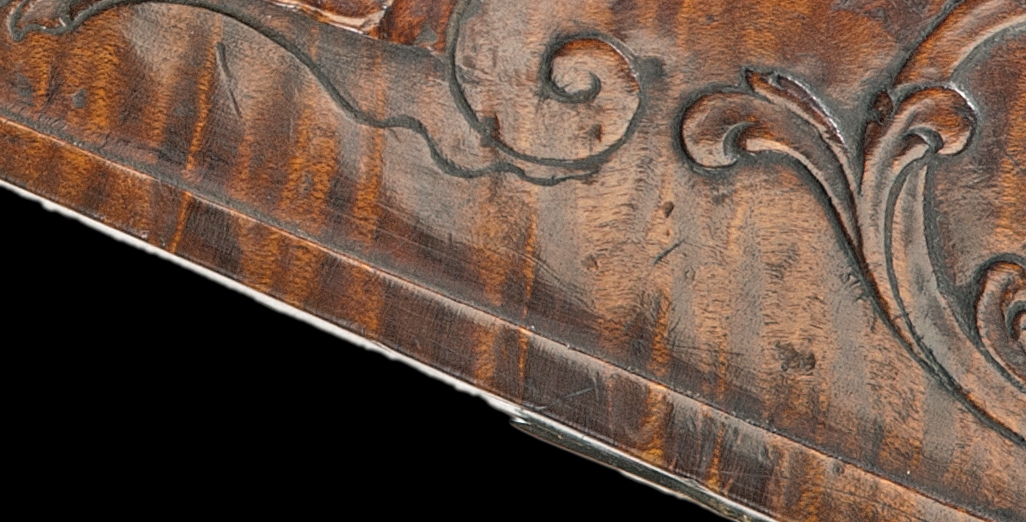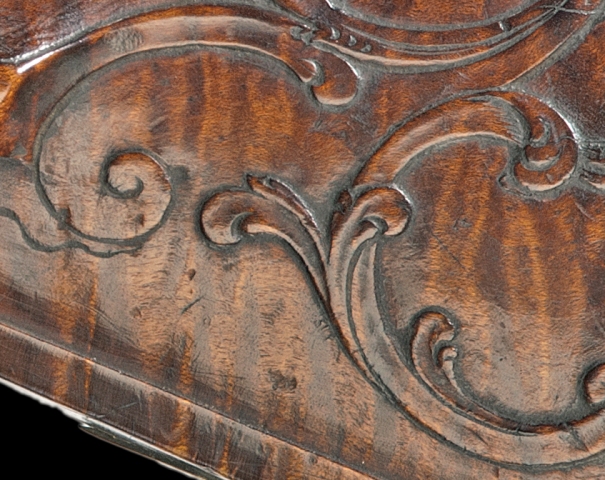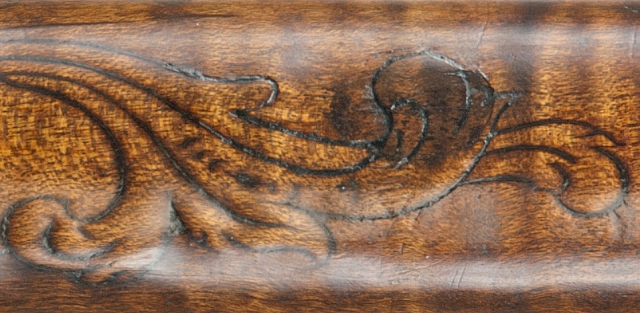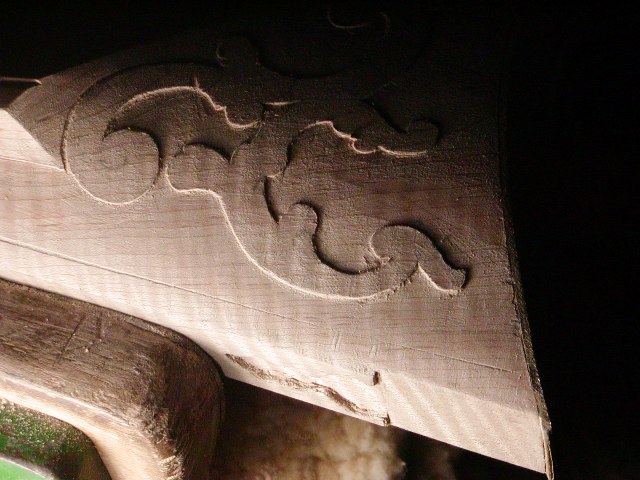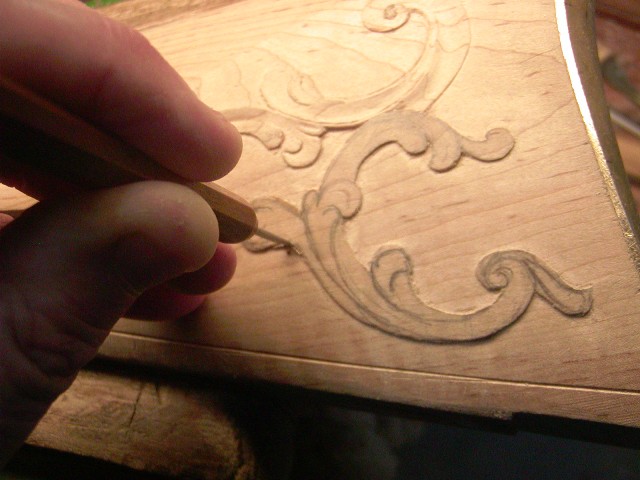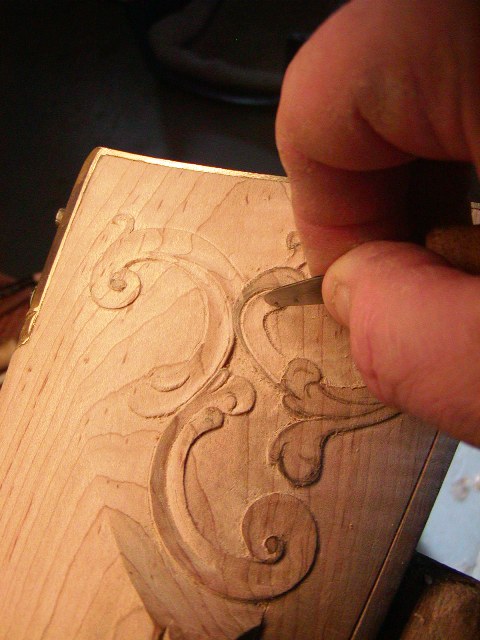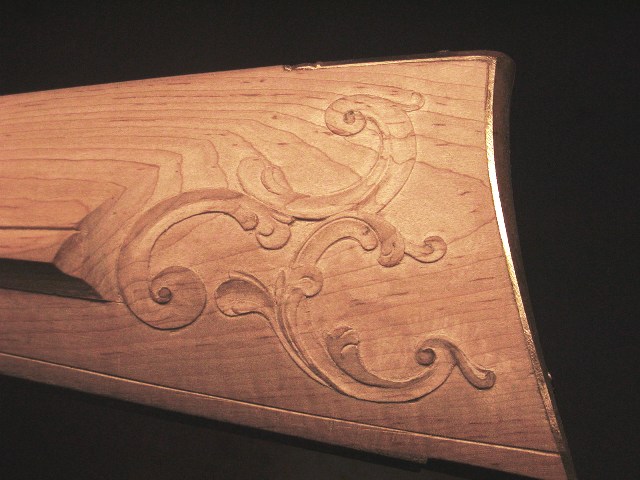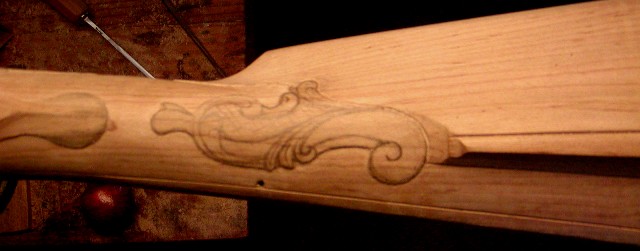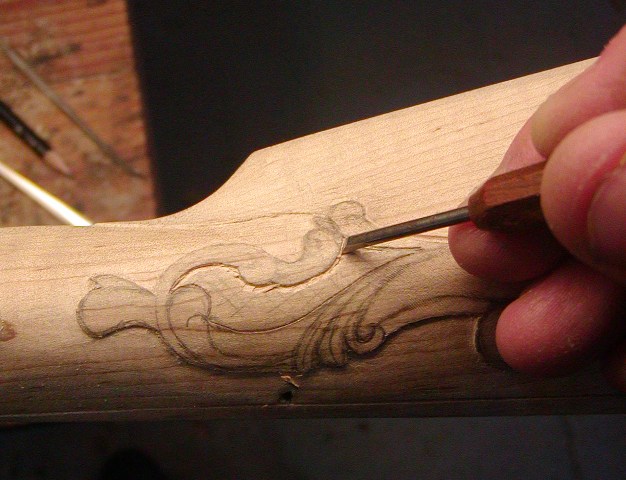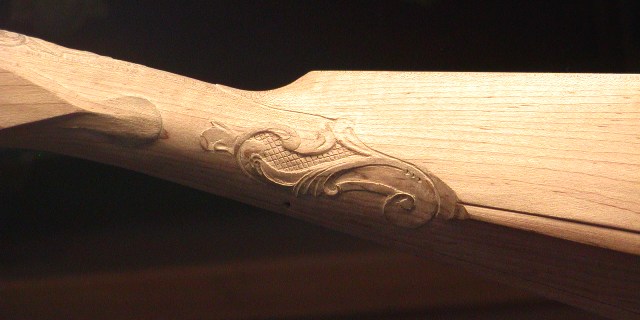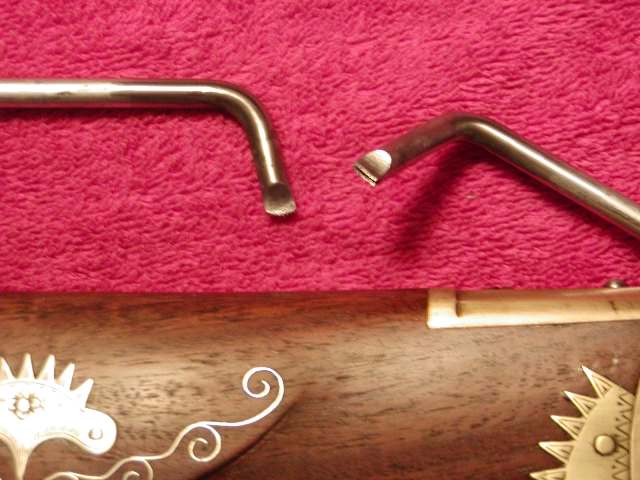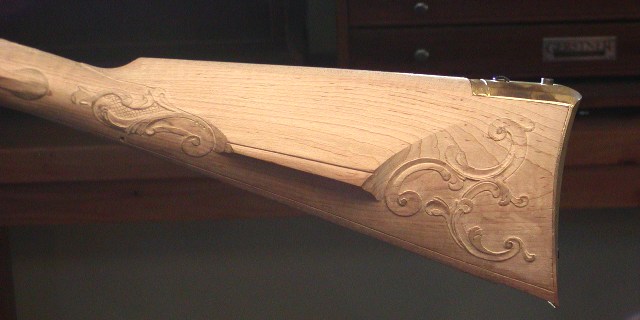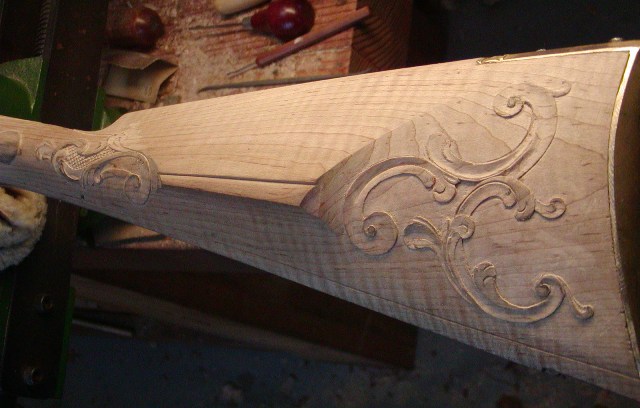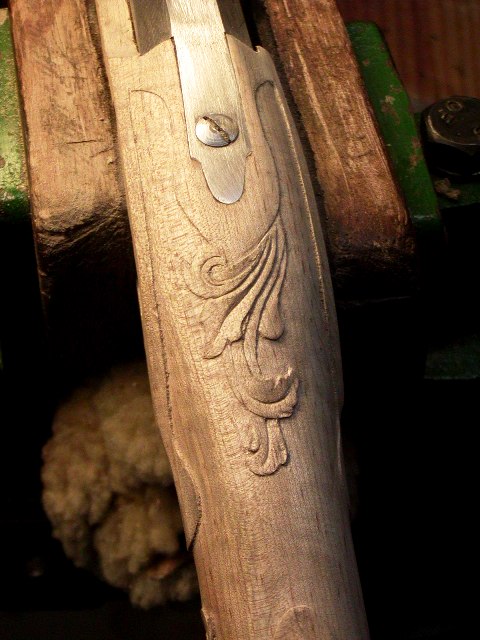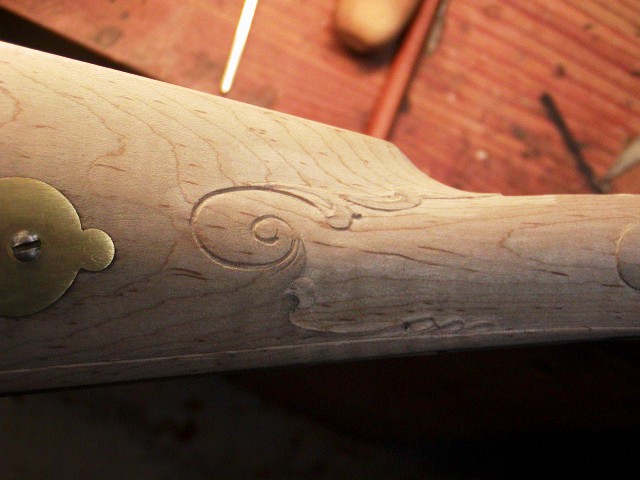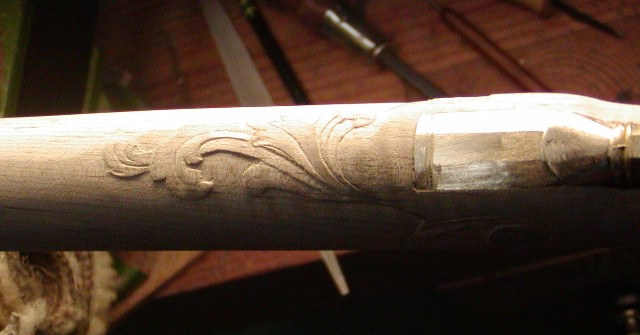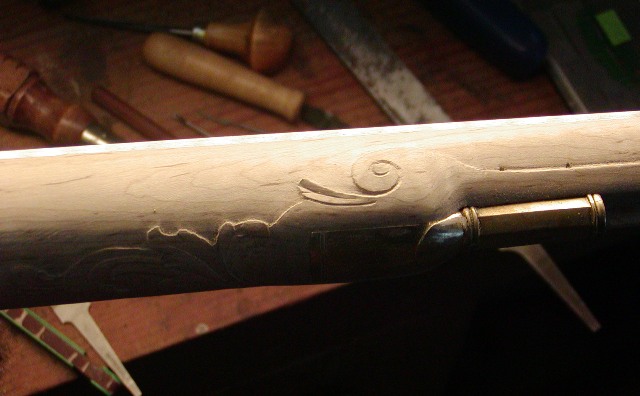Dave, when I was reviewing your pictures I noticed right away that the forward thimble had two pins.

Regarding the rear cheek piece...I hauled out my RCA book and looked at it under magnification. I believe it is an intentional step put in place to "enhance" the very bottom end of the long, curved and sharp line that sweeps up and back defining the back of the entire cheek piece. The upper edge of that step looks like a curved final extension of that whole sweeping line. Now, take a look at #80b. While it's an unadorned cheekpiece, it appears to have an incised line, front and back, that may be attempting to do the same thing. On #81, there doesn't appear to be anything on the front edge since it sweeps nicely without a separate line or step. But both 80 and 81 appear to also have an incised line at the very bottom of the cheek piece molding. It's a really obvious line on 80 since there is virtually no adornment and it sticks out like a sore thumb, less obvious on the picture of 81, but it appears to extend from the carving at the back of the stock to the carving in front of the cheekpiece.
I wish RCA had higher quality pictures. Compared to the pictures in "An Intimate Look At the American Longrifle - Its Art and Evolution," RCA's pictures suck. Speaking of the "Intimate Look" book, The pictures of the Haines rifle on pg 13 and 15 show a very defined "line" at the bottom of the cheek piece. Apparently Haines did not like the cheek piece bottom to simply "blend in" at the bottom. He liked some kind of definition there. The middle left picture on pg 15 shows this line extending to the front carving. I think that line looks out-of-place on "unadorned" #80, but it's almost like he couldn't help himself...he just had to define the bottom of the cheek piece more! Also on page 15 in the lower right corner closeup, the rear of the cheek piece is not a long sweeping line like on #81...it's a rather short arc and goes right into the carving, but there is still a defining incised line from the carving in a sweep down and back along the very edge of the lower cheek piece. So it appears to me, that he liked very crisp and clear "definitions" of these edges. At least that's my rather inexperienced view of what he might have been doing.
One could look at those pictures for a lifetime and probably not catch in one's brain all the exquisite detail of these guns!
Just a note to anyone following this post that Dave had suggested the "Intimate Look" book to me and while it's not cheap, it is filled with absolutely glorious full-color photos of guns filling nearly 200 pages...most highly decorated. I leave it right on the living room coffee table for guests to enjoy.

